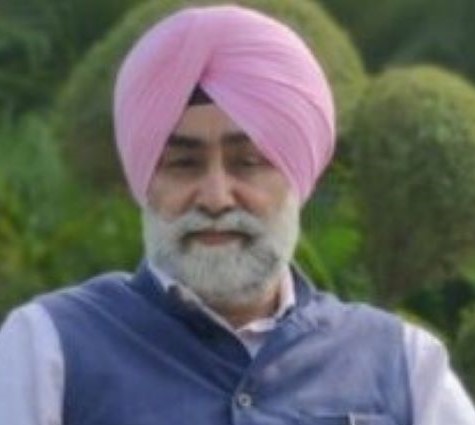 When high-impact political missiles fall on fields, the fallout is brutal. The 2025 tariff war—U.S. hikes, China’s fiery retaliation, and Beijing’s swift pivot to South America—has exposed a painful truth: trade policy may be framed in Washington, but the real costs are paid in silos, barns, and ports. U.S. farm exports to China, once its largest agricultural customer, plunged by over 50% in the first half of 2025. Soybeans, pork, and other staples of the American farm economy lost their markets, while Brazil and Argentina stepped in to seize the opportunity.
When high-impact political missiles fall on fields, the fallout is brutal. The 2025 tariff war—U.S. hikes, China’s fiery retaliation, and Beijing’s swift pivot to South America—has exposed a painful truth: trade policy may be framed in Washington, but the real costs are paid in silos, barns, and ports. U.S. farm exports to China, once its largest agricultural customer, plunged by over 50% in the first half of 2025. Soybeans, pork, and other staples of the American farm economy lost their markets, while Brazil and Argentina stepped in to seize the opportunity.
The damage is structural, not seasonal
This is not a temporary dip. China’s decision to replace U.S. supplies with South American contracts shifts entire supply chains. Once ships, traders, and processors realign their sourcing, those habits harden into long-term patterns. Even if tariffs ease later, many Chinese buyers will stick with Brazil and Argentina. Emergency payments in America, such as the USDA’s ECAP program, help farmers survive this year. But subsidies cannot rebuild trust or restore long-term markets that have slipped away.
Should India retaliate like China?
The instinct to retaliate is strong, but India must act with caution.
1. Economic blowback. Big mirror tariffs can hurt Indian consumers and industries that rely on imports from the U.S. They may raise input costs for Indian farmers instead of protecting them.
2. Market access and leverage. Tit-for-tat tariffs often accelerate supply chain shifts. If India mirrors China’s retaliation without care, U.S. buyers may simply look elsewhere, leaving India with little to show for the gesture.
3. Strategic alternatives. India’s smarter path lies in targeted, calibrated tariffs where leverage is clear, coupled with aggressive market diversification — FTAs with the Gulf, EU, and Latin America. India can also strengthen cold chains, processing, and logistics so its farmers capture more value globally. WTO disputes and plurilateral alliances are also safer and longer-lasting tools.
So yes, India can retaliate — but it should be strategic, not emotional.
Was PM Modi’s pledge to “stand with farmers” visionary?

Is former Member of Punjab Public Service Commission
A farmer and keen observer of current affairs
Prime Minister Modi’s words — “I will stand with Indian farmers and am willing to pay any price” — carried unusual weight. At the time, few understood the depth of his statement. Probably he saw it coming.
Politically, it reassured rural India that farmers were not bargaining chips in international trade wars. Strategically, it prepared India for hard choices if global tariff walls hit domestic producers. In hindsight, with U.S. farmers bleeding under Trump’s tariff-first approach, Modi’s stand looks prescient.
But words alone are not enough. Visionary leadership must combine short-term relief with long-term competitiveness: boosting productivity, building infrastructure, and diversifying markets so that farmers are never hostage to any single foreign buyer.
Indian agriculture sector needs deep structural changes to meet global challenges. The 2020 farm laws which were unfortunately taken back, could have added a bit of strength to the Indian farmers. But they were buried under an aggressive, sponsored narrative of falsehood. Indian Farmers need liberalization, access to technology including modern seeds. Agriculture sector needs huge investments from both government and private sector.
Modi’s pledge will be truly visionary if it becomes a springboard for resilience for farmers, not just a slogan. USA has long used the WTO as a stick to control subsidies given to farmers by developing countries, but with now WTO being made redundant by USA itself, India can increase subsidies to farmers “if it can afford”. But the subsidies should be direct, targeted not like on Urea which seriously distorts the markets.
Can America afford prolonged isolation?
No major economy can wall itself off for long. The U.S. can cushion farmers with subsidies for a year or two. But the longer tariffs remain, the more permanent the losses: shrinking export markets, supply chains that bypass America, higher consumer prices at home, and reduced U.S. influence over global trade rules.
Tariffs may give political talking points in an election year. But in the long game of trade, America risks surrendering leadership to countries that provide reliable, stable supplies — Brazil, Argentina, and others.
Conclusion
Tariffs are blunt instruments that too often hurt the very people they claim to protect. In 2025, Trump’s tariff war backfired, with U.S. farmers suffering first and hardest.
For India, the lesson is clear: retaliation should be careful, not crude. Prime Minister Modi’s words to stand with farmers carry weight — but they will only become truly visionary if backed by a strategy that shields incomes today while strengthening competitiveness for tomorrow.